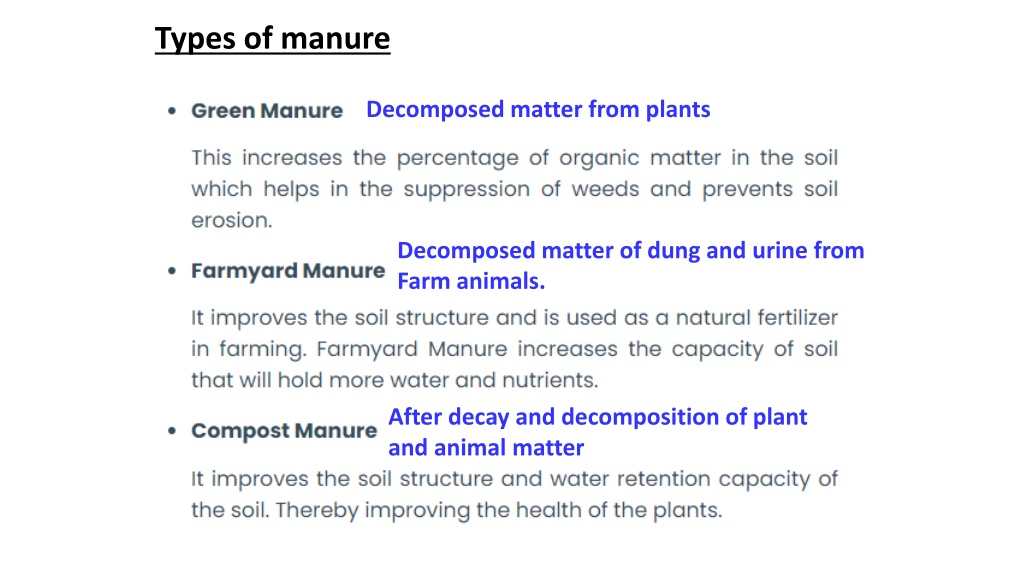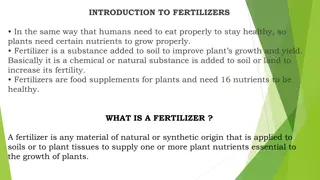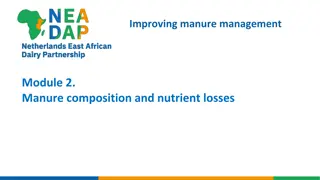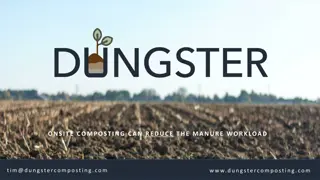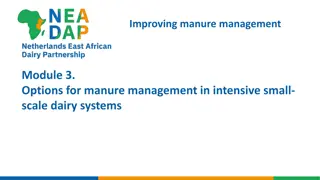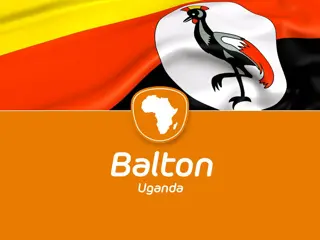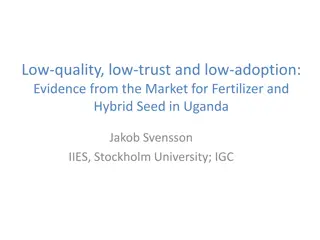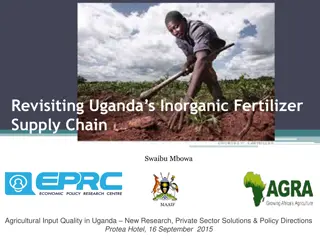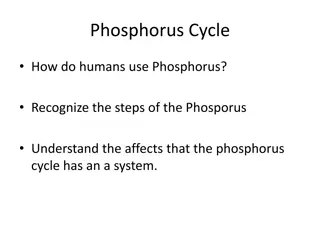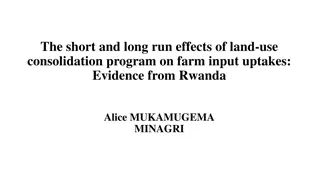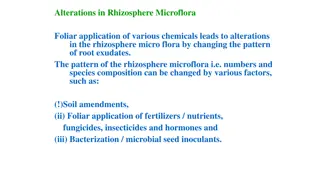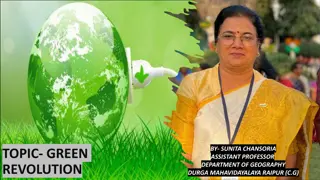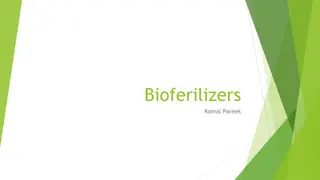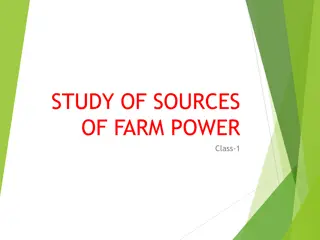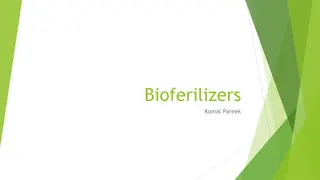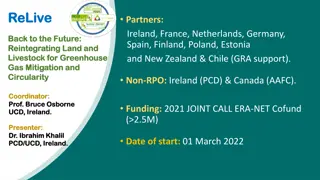A Comprehensive Guide to Fertilizers and Manure for Agriculture
Explore the various types of manure, nutrients in fertilizers, organic and inorganic fertilizers, biofertilizers, pond fertilization techniques, and factors influencing proper pond fertilization. Learn about different types of fertilizers used for pond fertilization, including solid fertilizers. Enhance your knowledge on the importance of natural and artificial fertilizers in agriculture.
Download Presentation

Please find below an Image/Link to download the presentation.
The content on the website is provided AS IS for your information and personal use only. It may not be sold, licensed, or shared on other websites without obtaining consent from the author. Download presentation by click this link. If you encounter any issues during the download, it is possible that the publisher has removed the file from their server.
E N D
Presentation Transcript
Types of manure Decomposed matter from plants Decomposed matter of dung and urine from Farm animals. After decay and decomposition of plant and animal matter
Nutrients in fertilizers Natural nutrients: C, H and O. Primary nutrients: Urea, Nitrogen, Phosphorous, Potassium (NPK). Secondary nutrients: Ca, Na, S, Mg. Micronutrients: Co, Mo, B, Fe, Mn, Co, Zn. Types of Inorganic fertilizers (Based numbers of primary nutrients) Single fertilizer Fertilizer containing one nourishing element. - NH4Cl, KCl. Compound fertilizer Contains 2 or more nourishing elements. KNO3, Diammonium phosphate.
Types of organic fertilizer (Based on source) Animal based: By products from meat and diary industries. Powdered blood, Powered bones, fish by-products. Plant based: alfa-alfa meal, corn gluten meal, cotton seed meal. Mined fertilizers: The organic fertilizers mixed with minerals soft rock phosphates and lime stones. Manure versus organic fertilizers Manure is formed due to decomposition of plants and animals naturally. Organic fertilizer is artificially made from plant and animal products in factories.
Biofertilizer types Vesicular Arbuscular Mycorrhiza
Pond fertilization: A management for soil and water quality aquaculture LIMING An important process of pond preparation. Pond soil has an acidic property. So It has to be made alkaline by adding neutralizing compounds like Ca, and Mg.
Solid fertilizers used for pond fertilization Example Granular form of fertilizers containing N. P and K. Phosphorous is vital for growth of aquatic species.
Instantly soluble fertilizers used for pond fertilization Controlled release fertilizers
(Fat, Carbohydrates, Urea and Minerals) and can be used as fertilizer. YES .Sewage contains large amount of organic matter It is not that easy .like spreading dry leaves on a lawn. It contains heavy metals, oils, chemicals and micro- organisms too. Therefore, the need of hour is to treat the sewage followed by using it as fertilizer.
